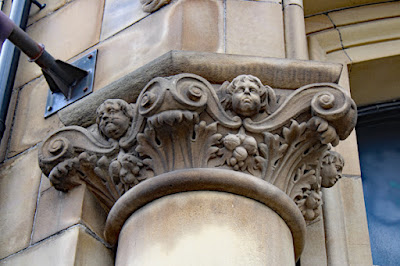Finishing my brief investigation of the former Hammerton Street Council School, I then headed off down Staniforth Road to Attercliffe – a once thriving suburb of Sheffield that was both at the heart of the steel industry and had a substantial residential population, which could sustain various banks, Banner’s department store, Burton’s and the Adelphi Theatre.
The post-war clearance of Victorian housing, without renewal, led to a rapid decline in its population and the closure of schools and shop. The area became known as the centre of the sex industry in Sheffield and developed a very seedy reputation - while the remaining steel and metalurgical industries and associated busineses carried on around it.
Since I first passed through Attercliffe on the No. 69 bus more than 40 years ago, the area has changed beyond recognition. The steelworks have been replaced with large venues like the Arena, Valley Centertainment, the Don Valley Bowl, the ill fated Don Valley Stadium and others dedicated to various sports – as well a mixture of office parks and other commercial interests.
Having seen nothing of architectural merit on the short walk down from the school, just before arriving at the canal, a long boundary wall topped with crozzle grabbed my attention, having seen plenty of this in Sheffield during recent walks.
I only stopped long enough to take a few photos to record another use of this interesting building material, but I did notice one block that looked very siliceous, with a well defined fracture patten that looks almost crystalline – a great contrast with the black, vesicular lava like crozzle that surrounds it – and another completely different material that had been used to repair the wall.
Arriving at the junction with the A6178 Road to Rotherham, the old Yorkshire Bank, dated c.1900 and which has now been put to some other use, stands proudly on the corner and is just the first of the several listed buildings that I would find in the area.
On this occasion I didn’t look closely at the stone, but this uniformly coloured massive, medium grained sandstone could be from any of the major stone producers in Derbyshire and West Yorkshire, which were now connected to Sheffield by the growing network of railways.
Continuing along Attercliffe Road, I soon encountered another old bank building, this time built in brick with massive sandstone used for the very bold dressings and the engaged columns, which flank the front entrance.
As with the Royal Bank of Scotland just a little further up the road, the massive sandstone would also have been brought in from the best suppliers in the Pennine region of northern England, but I didn't look closely at it.
Very many of the late Victorian and Edwardian banks also made great use of a variety of polished granites from Scotland and further afield in Scandinavia, to embellish their properties with columns and plinths, with granites from the south-west of England often being used for entrance steps.











No comments:
Post a Comment